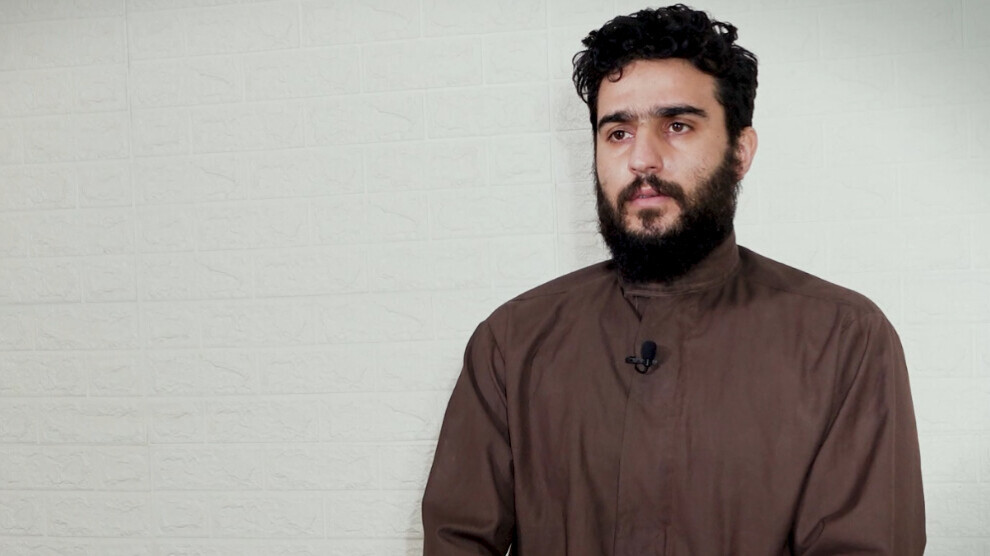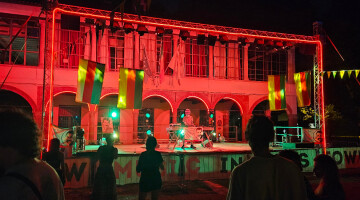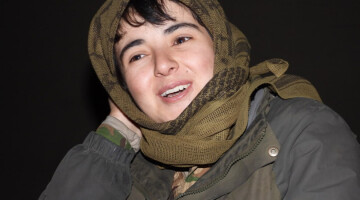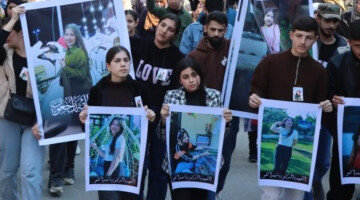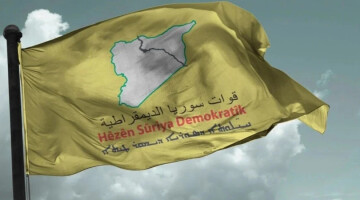On January 20, the largest ISIS attack in a long time made waves far beyond Rojava. Hundreds of jihadists who had infiltrated into Rojava from the Turkish occupied zone in northern Syria and Iraq attacked Sina Prison in Hesekê with the aim of liberating the approximately 4,200 ISIS jihadists imprisoned there, who had launched an insurgency at the same time, and creating the nucleus for a new ISIS territorial rule. The attack was able to be put down by the Syrian Democratic Forces (SDF) and the Asayîş with U.S. air support after days of fighting and hundreds of deaths and casualties.
" ISIS governor" is in Turkish-occupied territory
According to a report by the ANHA news agency, the captured ISIS jihadist Abdullah Ismail Ahmad was jointly responsible for the operation at the leadership level. He is said to have received instructions from an "ISIS governor" named Abdul Azizi. He is currently in the occupied zone around Serêkaniyê and Girê Spî and is working closely with the Turkish intelligence service MIT.
This claim is by no means outlandish, as evidence exists of many high-ranking ISIS commanders staying in Turkish-occupied areas in Syria and Rojava. For example, the "ISIS caliph" Abu Ibrahim al-Hashimi al-Quraishi was killed in February during a U.S.-led coalition operation against ISIS in an area between Afrin and Idlib "controlled" by Ankara in cooperation with the al-Qaeda offshoot HTS. There were three Turkish army military posts within 200 meters of his house. According to U.S. President Joe Biden, al-Quraishi is also believed to have been responsible for the ISIS storming of the prison in Hesekê. His predecessor, Abu Bakr al-Baghdadi, had also been killed in Idlib in the fall of 2019.
Attack failed thanks to SDF intervention
Abdullah Ismail Ahmad reported in his testimony that during the attempted storming of Sina Prison, some of the ISIS jihadists managed to escape to the Xiwêran neighborhood. There, they reportedly stayed near a mosque. However, since the SDF gained control of the situation, no contact with those who had escaped was possible. The escapees were surrounded by the SDF and killed in battle.
The aim of the attack on the detention center was to free "certain people" from captivity, to spread fear and terror, to take control of Hesekê and to proclaim the city the new center of the "caliphate". Subsequently, other areas were to be occupied and ISIS was to be rebuilt. For this purpose, the jihadists who had escaped from prisons were to be used and a new military force of the so-called "Islamic State" was to be created. To this end, ISIS gathered all its units and requested support from other regions, he said.
"MIT sent us the weapons"
Meanwhile, the MIT had supplied weapons to the jihadists in the Hol reception and internment camp. The aim was to create chaos in the camp through assassinations and attacks by the jihadists. However, with the successful intervention of the SDF, the plan failed in its approach. MIT smuggling networks in Hol Camp have been busted time and again. For example, Turkish intelligence smuggled ISIS members out of the camp in water tankers, among other things.
Commenting on the preparations for the attack in Hesekê, Ahmad said: "We received the order from the person named Abdul Aziz and launched the operation. The goal was to defeat the SDF. We prepared weapons, ammunition and booby traps. To document our operation, we set up cameras. Three groups prepared this operation. Each group consisted of two people. The weapons, booby traps and cameras were given to these people." According to the ISIS commander, the first group was to observe the road between Hesekê and Deir ez-Zor and target all SDF and autonomous administration vehicles.
The second group was to operate in Hesekê and attack military vehicles and checkpoints. The third group was on permanent movement in Shaddadi, targeting checkpoints, vehicles and civilians.
In addition, Abdul Aziz ordered the targeting of well-known figures. Abdullah Ismail Ahmad was in the field with an ISIS unit for this purpose.
The role of MIT is documented
Ahmad was captured on April 14 during an SDF operation. Large quantities of explosives, weapons, and ammunition were found on him. During the investigation, documents and information came to light proving that the jihadist was being run as an ISIS commander from an operational base in Turkey established by MIT. The capture of Ahmad averted a major threat to the region.
Funding from Turkey
The statements of captured ISIS jihadist Muhammed Abd Avad also support the evidence of a link to the Turkish state. He stated that the gatherings in preparation for the attack took place primarily in Turkish-occupied areas in northern and eastern Syria. "Certain individuals in Turkey funded the ISIS cells in the areas controlled by the autonomous administration. These individuals have close ties to Turkey's security agencies. Both the attack and the general ISIS activities in the region are funded by senior security officials."

